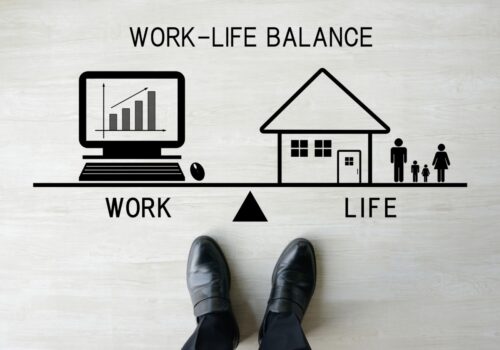The workplace may be an environment for opportunity, growth, and development, but there is a dark side, too, and that is workplace abuse. Almost every workplace is possibly tainted by this phenomenon manifested in the professional sphere, wreaking havoc on an individual’s well-being and performance. A problem prevalent for decades is now on the rise. How can employees protect themselves from hostility at work? Here are the signs of workplace harassment and how to overcome the distress it can cause.
Understanding Workplace Abuse
Emotional abuse, workplace abuse, or bullying are types of psychological harassment often used by people to manipulate, intimidate, or dominate a colleague. In most scenarios, it is a senior who resorts to such indecent behavior, subjecting a junior to various forms of workplace abuse that can include verbal abuse, exclusion, humiliation, and consistent criticism. Workplace abuse can be very subtle and, as a result, is challenging to identify, making it even more of a dangerous threat to a professional environment.
According to a 2019 survey involving 2000 workers in the UK, 23% said they were bullied at work, 25% were made to feel left out in the workplace, and 12% admitted to struggling to make friends in their place of work.
Recognizing the Signs of Workplace Abuse
Addressing abuse at work requires one to recognize the signs first. Only then can it be effectively nipped in the bud or tackled. Here are the most common symptoms of workplace abuse:
- Consistent Criticism: Finding yourself consistently on the receiving end of excessive criticism without reason might be a sign of emotional abuse. Without any feedback, the complaint is solely intended to undermine your self-esteem. Criticism can also involve belittling the victim through rude jokes and sarcasm.
- Ignoring: Ignoring someone constantly or not acknowledging their presence or contribution to a task is also a subtle sign of emotional abuse. Ignoring also involves other forms of abuse like rejection and exploitation, resulting in ideas being stolen or not giving credit where credit is due.
- Isolation: A common tactic employed by emotional abusers to sideline victims from colleagues or make them feel unsupported. Sometimes, there will be deliberate attempts to not inform the victim about group discussions or meetings requiring their participation. Isolation can also go as far as spreading rumors or gossip to turn others against you.
- Gaslighting: A type of manipulative behavior, gaslighting is a constant distortion of the truth to make you doubt yourself and your sanity. Gaslighting is the act of manipulation with the aim of making someone so unsure of themselves that they eventually come under the total control of the abuser..
- Creating Conflict. Incompetent managers might adopt this tactic to create a divisive environment by pitting employees against one another and creating conflict. The idea is to divert focus from their efficiency and blame problems on workers instead.
- Excessive Workload: Emotional abusers will often pile up work on a victim, knowing they cannot handle it. Sometimes, this might be done without showing signs of hatred or irritation to avoid raising suspicion about the abusive actions. Excessive work creates undue stress and anxiety, furthering their control over the victim.
- Verbal Aggression: A dangerous form of abuse resulting in aggressive outbursts of sarcasm and criticism against a victim. The abuse is even more rampant in a situation where a junior has no resources to counter the negativity, especially if they desperately need to keep their jobs.
Managing Emotional Abuse in the Workplace
Coping with emotional abuse in the workplace can be complex, especially when it involves dealing with a senior or a toxic boss. It would help if you made your well-being your top priority when dealing with workplace abuse. Here are some strategies to help you counter the negativity and harassment at work.
Self-Awareness
Recognizing and understanding that you are the victim of workplace abuse is essential. Trust your instinct, be sure, and then decide how you plan to act upon it. Get confirmation from a close, trusted friend or colleague to observe the abuse. This helps in knowing and confirming the harassment. Collect evidence by documenting incidents and conversations to have a record of the abuse if needed.
Know Your Company’s Harassment Policy
Most companies have a policy on workplace ethics and behavior, including harassment and bullying. Find out all the details you can, including processes for informing supervisors and the steps you can expect them to take. Moreover, you could also explore your country’s laws on such issues. While bullying isn’t illegal in most countries, harassment and abuse are.
Confront Your Abuser
You could consider confronting your abuser directly if you feel safe doing so. Sometimes, people might not realize the extent of the emotional damage they are causing. Confronting an abuser is best done in the presence of a supportive colleague because there is always a possibility that the abuser will be unwilling to acknowledge the abuse or listen to you.
Make an Official Complaint to HR or Seek Legal Action
If you are experiencing persistent abuse, it is better not to delay and to file an official complaint with HR. However, present your case with documented evidence and verbal or written possible support from colleagues who can vouch as witnesses and support your claim. If your HR does not address the problem, consult an attorney to explore potential legal action against the abuser or the organization for failing to address the issue adequately.
What to Do if the Emotional Abuser is Your Boss
Toxic bosses aren’t uncommon, and several resort to workplace abuse. A bad boss can affect your quality of life both in and outside the workplace, causing a lot of mental stress. Most companies have policies to address such situations, and here, too, documented evidence and support from a colleague is crucial in addressing the problem.
How Workplace Abuse Affects a Company
It is the responsibility and duty of a company to ensure the well-being of its employees. Addressing the problem of workplace abuse is not just ethical; it is also a legal duty under the laws of various countries to safeguard the interests of workers. Moreover, emotional or workplace abuse, harassment, and bullying are bad for business and can impact an organization in negative ways, such as:
- Poor employee relations
- Lack of respect for seniors
- Loss of staff
- Poor retention rate
- Hostile working environment
- Poor work culture
- Inefficiency and low productivity
Workplace abuse is a deeply concerning issue that can have lasting effects on an individual’s mental health and professional life. Recognizing the signs, seeking support, and using every resource available to stop it in the initial stages is the only way to prevent it from worsening further. Once an emotional abuser sees how nothing much is being done about their deplorable actions, they tend to take further advantage of the situation, increasing the extent of the abuse. One needs to remember that there will always be support in the workplace, and help is available to tackle workplace abuse if you look for it.
















